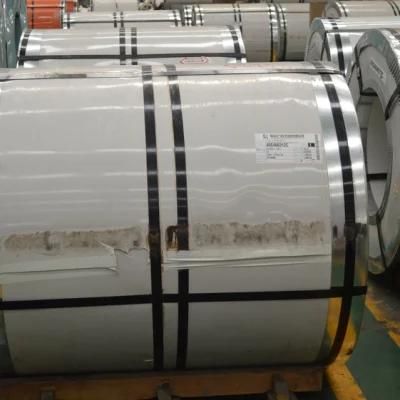
Cold Rolled 309S Stainless Steel Coil with High Quality
WUXI BAOWANG STEEL CO., LTD.- Certification:ISO, RoHS, IBR
- Grade:300 Series
- Standard:ASTM, AISI, GB, JIS, DIN
- Type:Stainless Steel Coils
- Shape:Flat
- Technique:Cold Rolled
Base Info
- Origin:Mainland China
- Transport Package:Standard Export Package or as Required
- Delivery Time:Depend on Quantity
- Surface Treatment:Ba, 2b, No.1, No.4, No.5, Hair Line, Embossed
- Model NO.:300 series
- HS Code:7219
- Production Capacity:1000 Tons Per Month
Description
Surface Finish
Definition
Application
2B
Those finished, after cold rolling, by heat treatment, pickling or other equivalent treatment and lastly by cold rolling to given appropriate luster.
Medical equipment, Food industry, Construction material, Kitchen utensils.
BA
Those processed with bright heat treatment after cold rolling.
Kitchen utensils, Electric equipment, Building construction.
NO.3
Those finished by polishing with No.100 to No.120 abrasives specified in JIS R6001.
Kitchen utensils, Building construction.
NO.4
Those finished by polishing with No.150 to No.180 abrasives specified in JIS R6001.
Kitchen utensils, Building construction, Medical equipment.
HL
Those finished polishing so as to give continuous polishing streaks by using abrasive of suitable grain size.
Building Construction.
NO.1
The surface finished by heat treatment and pickling or processes corresponding there to after hot rolling.
Chemical tank, pipe.
Our produce:
Stainless steel coils
Stainless steel pipes/tubes
Stainless steel sheets/plate
Stainless steel round/square bars
We insist " quality first, reputation foremost "If you have any problem please feel free to contact us! We primose to service you with the best product of the most reasonbale, all the time ,offer our best service.
TIPS:Stainless steel maintenance:
(1) Regular cleaning and maintenance
(2) Pay attention to prevent the occurrence of the phenomenon of surface scratch
(3) Use soap, weak detergent or warm water to remove surface dust, dirt
(4) In addition to the surface of the binder with alcohol or an organic solvent (ether, benzene)
(5) Use neutral detergent or ammonia solution in addition to surface oil
(6) With 10% acid or abrasive detergent in addition to the surface of the embroider caused by the dirt.
